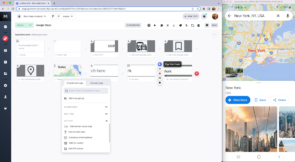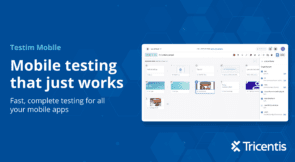Mobile apps have become so ubiquitous worldwide that the Google Play store had almost 2.5 million apps available for download at the end of 2023. It’s no wonder mobile testing has also increased in importance. But when it comes to testing mobile apps, where should these tests take place? Ideally, we want to test on the actual devices our users will install the application on, but the options are so numerous, this is impractical. Think of the sheer volume of makes and models available to users, then layer on multiple configurations for each model, then throw different operating systems into the mix, and testing becomes daunting. This is the junction where dev teams need to decide whether to test on real or virtual devices–i.e. simulators or emulators.
Real Devices in Mobile Testing
In mobile testing, real devices let you test your application on an actual device. This helps determine whether the app will function properly in the hands of a customer. A real device has not been created especially for research and development purposes. You and I and every other end-user use the same device. Therefore, all you have to do is purchase a device, install your app, and start testing . Since it’s an actual device, all the parameters you see will be accurate, making it the best way to test your application.
So then why not use real devices exclusively in mobile testing? One thing to consider is that using real devices can be cost-prohibitive because you would need to acquire multiple devices for testing. Another drawback of working with real devices is that cross-platform testing is difficult to execute. Debugging real devices can prove difficult, too, especially when hunting for defects. The alternative? Virtual devices.
Mobile Testing on Emulators and Simulators
Unlike a real mobile device, a virtual device is software that simulates the majority of the key functions of a real smartphone. Because it emulates the characteristics of a smartphone, testers can run apps on it to get a sense of how they would function on the assigned device.
Virtual testing equipment can mimic real equipment and is more affordable, but because of issues with accuracy and dependability, it cannot completely replace real equipment. The two types of virtual mobile devices used in testing are emulators and simulators.
Emulators
An emulator replicates the functionality of the target device’s hardware, operating system, or other applications. It allows you to mimic a genuine device and test your app. Debugging, automation, and unit testing all make use of emulators. Because software is typically platform-specific, developers create different programs for Windows, Mac, iOS, Android, and iOS.
Emulators offer a variety of emulation techniques, but the ultimate goal remains the same: to replicate the sensation of using native hardware. Some emulators are more feature-rich and can perform better than the original product.
Simulators
A simulator enables your device to execute particular applications designed for other operating systems. Simulators are mostly used for iOS devices and are created in high-level languages. When testing an app, iOS simulators are employed to ensure the program functions as expected in a variety of scenarios.
Let’s say you need to assess an application’s ability to share data with another app. Usually, a simulated environment will work just fine because the actual hardware configuration is unlikely to impact data transfers for your app substantially. Ensuring an app’s interface renders properly at various screen resolutions may also be facilitated by using simulated testing environments.
Differences between Emulators and Simulators
Simulators and emulators allow you to test your apps on mobile devices and build a virtual environment on your desktop. Enable you to quickly and effectively test in a versatile, software-defined environment. So what are the differences between the two?
A simulator builds an environment with the same software parameters and settings as the real production environment for an application, while an emulator can mimic both the software and the hardware of the target device. Simulators create the software based on the existing hardware, so in a way, emulators are the step between a simulator and the real device. For low-level debugging, emulators are generally preferable over simulators because they more accurately replicate details and hardware of a target environment, but you’ll need to prepare for some performance trade-offs.
When to Test on Real Devices vs Virtual Devices
When should you use real devices, emulators, or simulators in your testing? Virtual devices are ideal for early phases of development, since they provide better debugging. With multiple iterations needed in the early stages, virtual devices might speed up and improve the efficiency of the cycle. For testing exterior behavior, emulators work best, whereas simulators are more suited for testing internal behaviors. Use simulators to test internal hardware and firmware, and emulators to test transactions and calculations.
Real devices and emulators are effective in their own way. For example, they will yield identical results if you plan on doing UI testing on the application. To complete this more quickly, use emulators. However, real devices might be the better choice for user acceptance testing and usability testing because of the accuracy factor. Some regression testing might still be performed using virtual devices, however, which could lead to unreliable results.
For test automation, consider using a tool that allows you to test on a mobile grid, which enables the use of multiple emulators and simulators for both iOS and Android.
Conclusions
Real devices in mobile testing are the actual, physical devices we can test on. They come with greater accuracy, as well as a higher cost. Simulators and emulators are virtual devices that can be used to reduce costs, while at the same time allowing better cross-device testing on a combination of many devices and configurations. When deciding on what type of device to test, the ideal would be a mix of real and virtual devices. Virtual devices such as emulators and simulators are more cost-effective, and work faster than real devices, while real devices offer the most accurate results.




